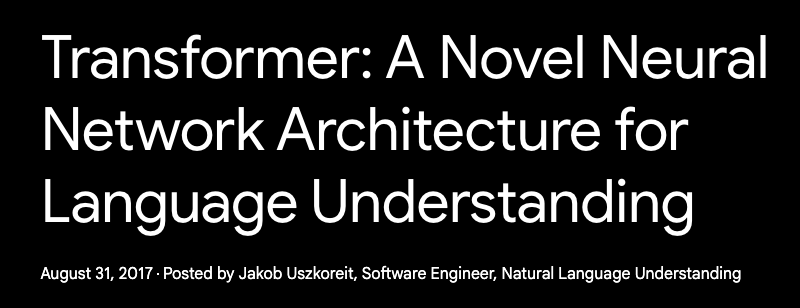“How do I get the most value out of AI?”
It’s the big question almost every business has been grappling with since the launch of ChatGPT. It’s also my job description and has been ever since I joined The Forge in April this year as Head of AI.
I’ve been wrestling with this question since 2017, when Google first released a paper on ‘transformers’, the architecture now powering ChatGPT, Claude, and Gemini. Even then, I found AI to already be a hugely valuable tool to analyse large volumes of text data to unearth core topics and themes. But clearly, AI has come a long way since then.
So how do you get the most value out of AI in 2025?
Over the last six months at The Forge I’ve been working to help everyone here use AI more effectively, and I’ve uncovered five areas where I believe AI creates the most value.

Google’s 2017 research paper was foundational for modern artificial intelligence
Five tasks that AI does really well
- Synthesising: anywhere you have a lot of disparate data, AI can help you put it all together, whatever the format and uncover the key themes across the lot. For example, we fed an LLM every episode of The Persuasion Game and asked it to identify the key themes. The podcast team could perhaps have found most of them if they sat down for an afternoon and worked through the episodes. But AI did it very quickly – and more to the point – it came up with some that were surprising, but made perfect sense. Would the team have uncovered these? Perhaps not.
- Analysing: AI can create new understanding through using advanced analytical processes, such as predictive forecasting and auto-clustering. For example, we might use AI analysis to automatically identify the optimal number of clusters within a Demand Spaces project. To be clear, we wouldn’t suggest replacing human analysis with AI. Rather it is good for a first pass analysis, to come up with themes and connections as a starting point for further, more in-depth and contextual thinking.
- Hypothesising: you can use AI as a sparring partner, to create and test hypotheses that predict current and future scenarios. We’ve used it to test out our ideas, critique our thinking and uncover things that we might have otherwise missed.
- Connecting: because the world is complex, it doesn’t always fall neatly into segments or clusters. For example, we do a lot of trends work and the reality is that emerging trends aren’t discreet – they are always interconnected. We’ve used AI to ideate around connecting trends in unexpected ways and exploring what those connections might look like.
- Enhancing: One of the most challenging stages in any consultancy project is bringing strategy, demand spaces, or innovation platforms to life and helping clients envision how they can utilise them. AI can help with creating mood boards, images, video and thematic descriptions that can provoke instant understanding in a way that a data-driven slide deck just can’t.

How NOT to us AI
Our business is centred around the fact that we have a set of hugely experienced and talented individuals who are experts in their fields. So, for us, AI is a support tool. It’s a tool and not an output, an executor not a decision maker. LLMs are powerful technology but they don’t really think or reason (despite what the marketing says); AI is a clever prediction tool that simply forecasts the next word in a sequence in a way that looks and sounds plausibly like intelligence. Given this, it’s important to understand that it’s not great at everything and there are several ways we wouldn’t use it.
For example, we would never use it to create the final output of a report, or a framework. It is a stepping stone to getting to a final version but never the final version itself. As a tool which is probabilistic rather than deterministic, it is by nature inconsistent – ask it the same thing twice and you are likely to get different answers which is fine when you are doing creative ideation, but you wouldn’t want it to do your management accounts, or create a detailed strategy for clients to follow. And we would never take what it tells us at face value. When we work with AI, we go through lots of trial and error, using deep prompts and pushing it really hard to try to get to answers that are of value before casting a final human eye over any of its output.

How we’ve used AI at The Forge
Where AI has been most useful is in helping us extrapolate trends, enrich our understanding of consumers across nuances such as geography, demographics and beliefs, and test outputs while leaving the actual thinking to the thinkers.
It’s easy to lean too far into the conceptual when discussing AI, so here’s a set of three of the most interesting areas I’ve worked on over the last 3 months to illustrate my view on AI’s value and show how we’ve used it in practice.
Use Case 1: Unstructured Data
Much of the world’s most interesting data is messy, qualitative, and unstructured: social conversations, search behaviour, cultural commentary, podcast discussions, news articles and more. At The Forge, our core belief is that insight is forged not found. We start with consumer research, but we have always used other data to help us build a more 360 view. We work to a model we call AWDiT to help us build our understanding of the world (fun fact – the four parts of AWDiT are the four quadrants represented in our logo). AWDiT stands for:
- Ask: consumer surveys and interviews
- Watch: ethnographic or behavioural data
- Dig: big data, data mining, client data sets
- Trends: predicting the future with trends, forecasts and foresight
AI helps us take this model further. We’ve developed a set of AI tools that go beyond simple social listening to forge all these disparate data sources to build a detailed picture of consumer and cultural understanding. When combined with structured datasets, they unlock insights that are both wide in scope and rich in cultural context.
For example, we have been asked by some of our food, beverage and alcohol clients about the impact of GLP-1 drugs. GLP-1 related subreddits have been an excellent source of data and insight to better understand the complexity of needs, motivations, experiences and challenges people face from using these drugs and the effect they are having on category behaviour
Use Case 2: Synthetic Respondents
Synthetic or AI research is a contentious field. It uses an AI-generated ‘persona’ with which you can have a conversation about their lives, needs, and motivations. They promise quick insight, an unlimited attention span, and comprehensive responses. The drawback is obvious: you’re not talking to real people. Responses can be valuable, but often generalised, missing the surprising and counterintuitive insights only humans provide.
However, when grounded in our own primary research and provided with a memory of real human responses, we have found synthetic respondents to be a powerful input into hypotheses and testing processes. We train AI respondents on human data, provide them with backstories and personalities to calibrate their response to ensure they more closely reflect the views and opinions of real people. Using synthetic respondents also means you can get more out of your investment in survey research without having to subject human respondents to overly long questionnaires.
These respondents are particularly helpful when mining for insight and understanding across hard-to-reach audiences such as CEOs or micro-segments; we’ve found the results that we get in B2B particularly valuable. So far, we have used synthetic data for a pharma client talking about potential buyers, an events company talking about attendees and a food company profiling synthetic chefs.

Use Case 3: Mapping Future Scenarios
We are currently developing a proposition that identifies evidence-based potential future scenarios to help better inform strategic planning and create data-led recommendations: what are the most likely scenarios clients should prepare for, and what are the bold bets worth considering?
Our clients often have a lot of trends documents. AI helps us sift through this material, spotlight the signals that matter, and enrich them with thinking from podcast discussions, scientific papers, whitepapers and regulatory bodies to extrapolate these trends out into plausible future worlds.
Crucially, we then map these future scenarios back onto a clients’ foundational frameworks e.g. demand spaces or segmentations to see how they will be evolve and how the client could and should respond. We’re currently testing this proposition with a pilot study which links future scenarios to real business impact, ensuring this remains rooted in practical (not theoretical) outcomes.
What’s next for AI at The Forge?
After six months of immersion, we’re now working on formalising our AI thinking into an overarching philosophy of how we use it to drive value for us and our clients. It’s a philosophy that will be rooted in augmenting, not replacing, the expertise of our people; using AI as a tool not an output; and, crucially, knowing when to use human intelligence over AI generated ideas.
AI is an incredible engine for powering human ingenuity and the most exciting thing about it is that it could all fundamentally change again next week. So, stay tuned. We’re in this together. I’ll be keeping you updated about our adventures in AI, the successes, the surprises and the setbacks alike.
